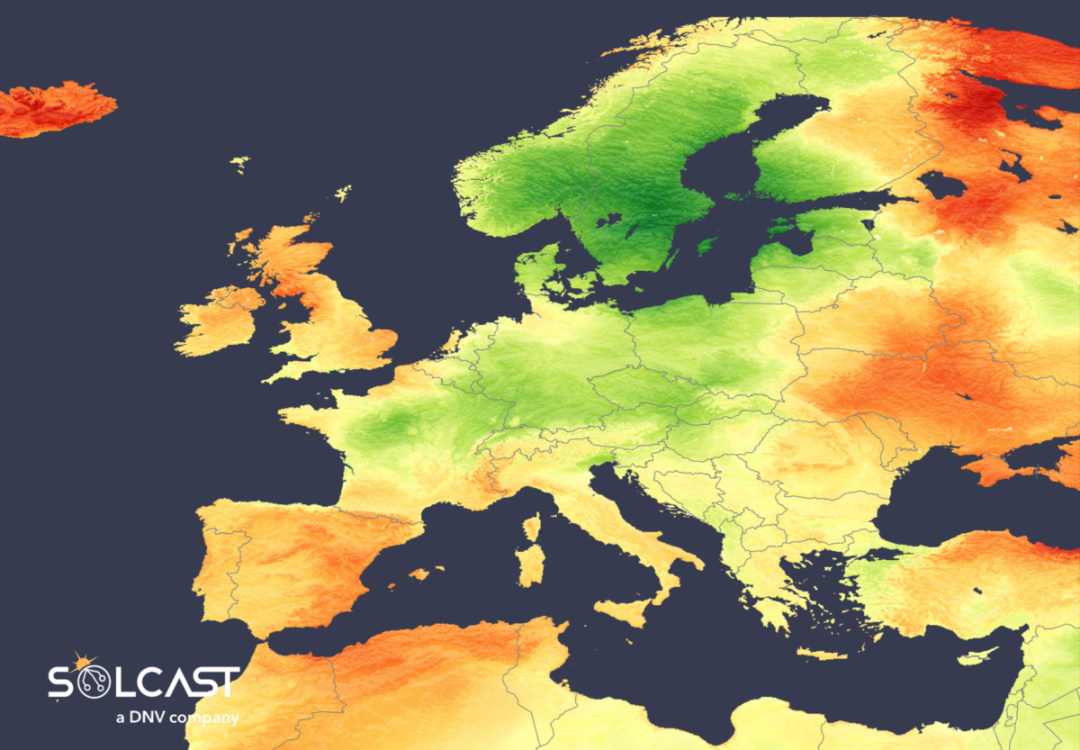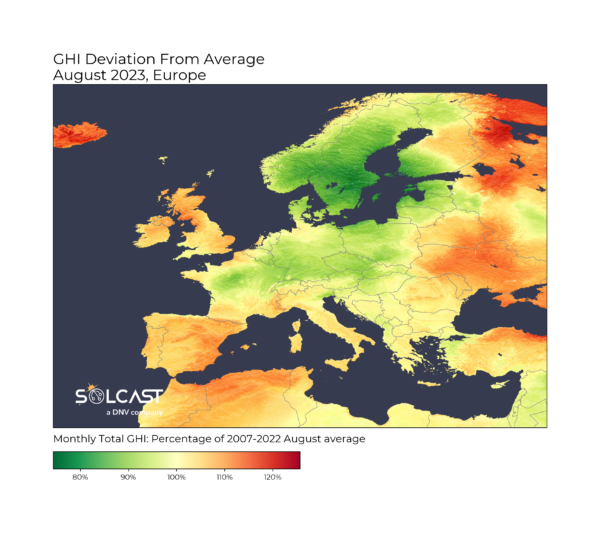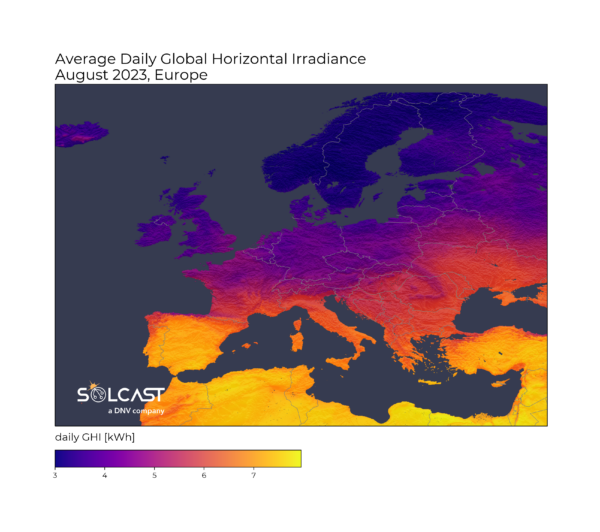
Jetstream changes drive UK, Spanish solar resources up
In pv magazine's weekly update, DNV company Solcast presents solar irradiance data it collected for Europe in August. Average irradiance in the UK in August was 110% of normal, with values exceeding this in northern areas. Spain and Portugal will receive 10-20% above normal due to reduced cloud cover.
Solar irradiance levels across Europe experienced significant anomalies this August compared to the long-term average. Irradiance rose by more than 10% in Spain and the UK as the jet stream concentrated towards Scandinavia, Central Europe and the Baltic Sea region, according to DNV company Solcast via the Solcast API.
Average irradiance in the UK in August was 110% of normal, with values exceeding this in northern areas. Spain and Portugal will receive 10-20% above normal due to reduced cloud cover. The jet stream usually brings broad cloud cover across the continent at this time of year, covering Europe from Spain to the UK and extending south to Greece. This August, the jet stream became more concentrated, channeling weather through the narrow gap between the UK and Spain and pushing it towards the rest of the continent, resulting in the irradiance pattern shown below. Spain also saw other extreme conditions throughout the month, including wildfires and heavy rainfall at the end of the month associated with storm activity. Despite the devastating and tragic impact of these two events, they did little to dampen irradiance levels after a promising start to the month.

Irradiance across much of Scandinavia was only 80% of the average August irradiance, and in central Europe from France to Poland it was only 90%. In addition to normal jet stream cloud effects, these areas were affected by clouds associated with Storm Hans earlier this month. The storm was the second unusually strong summer storm in the region, following July's Polly, which may be exacerbated by the concentration of jet stream patterns this year. The impact of the storm was significant, with World Weather Attribution (WWA) declaring the rainfall in Germany a once-in-400-year event, derailments in Denmark and railway bridge collapse in Norway also affecting rail infrastructure.

Spain usually leads Europe in August irradiance, so the impact of increased sunlight this year contrasts sharply with the rest of the continent in the average irradiance chart above. The Iberian Peninsula averaged over 7 kWh/m2 throughout the month, despite being affected by wildfire aerosols and late-month rainfall activity.
Solcast generates this data by tracking clouds and aerosols globally at 1-2 km resolution using satellite data and proprietary AI/ML algorithms. This data is used to drive the irradiance model, allowing Solcast to calculate irradiance at high resolution (typical deviation less than 2%) as well as cloud tracking predictions. The data is used by more than 300 companies worldwide that manage more than 150 GW of solar assets.

